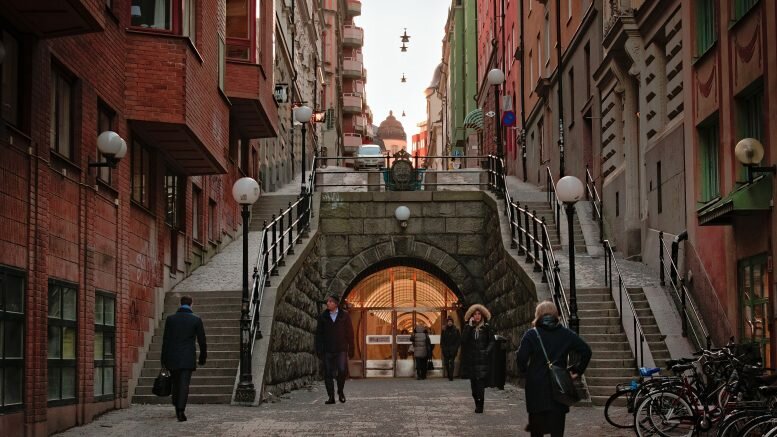The Swedish Royal Family addressed the country’s coronavirus measures during an annual TV conference. What should we make of the king’s words?
Sweden, unlike many other countries, never imposed a full lockdown, nor a nationwide mask mandate. Bars, restaurants, and other customer service establishments were never fully closed down.
Instead, the Swedish government, left it in large part, to individuals to make their own decisions.
Sweden’s approach, which was controversial since the beginning of the pandemic, has been taxed the hardest since the second large wave of coronavirus hit.
The king’s most recent statement: “The Swedish people have suffered enormously”
On the Swedish approach, King Carl XVI Gustaf stated:
“I think we have failed. We have a large number who have died and that is terrible. It is something we all suffer with.
“The Swedish people have suffered enormously in difficult conditions.”
Is it too early to bring conclusions?
Is it too early to tell which countries are “succeeding” and which are “failing”? And is there a set of criteria for this unprecedented pandemic that can determine who passes and who fails, anyway?
Arguably, there is not. The COVID-19 pandemic is unprecedented – and it’s still ongoing.
Sweden’s state epidemiologist Anders Tegnell said in November that it’s “not yet possible to say which country has the right strategy”. The country’s Prime Minister Stefan Lofven stated, “it’s when we are through the pandemic that the real conclusions can be drawn.”
It will likely take some time to determine the exact final tolls of the pandemic; those that are direct (death, illness, grief…), and those that are indirect (loneliness due to lockdowns, mental health due to job losses…).
But the matter is that we might never know the pandemic’s exact tolls, given that some of the outcomes can’t be easily counted or measured.
How does one accurately measure phenomena as complex as loneliness, or grief? Various surveys can try to do so, but scores of accuracy and bias dilemmas exist, especially when research is taken out of context.
Caution with corona numbers
Numbers of corona cases and deaths are constantly being reported in the media, but they could be misleading to the public. For example, some countries test much more than others do – which could lead to the perception that their rates are higher, even if they aren’t. Certain countries might reserve tests only for cases where illness is clearly prevalent, and so report a higher fatality rate than if they tested a larger population.
Even death numbers, which seem as if they should be clear-cut, can be misleading, as different definitions of “coronavirus deaths” exist. Underlying diseases could be used in some countries to downplay the severity of directly-coronavirus related deaths, while in others, the role of underlying diseases might not be taken into account enough.
These and other discrepancies in universal reporting of numbers don’t even scratch the surface of why caution with corona numbers is needed.
Sensationalism and misleading statements
Sensationalism without context is a tactic used by some to boost up click rates and viewing numbers – but it can have dangerous effects on mental health, and also be misleading, wrong, and used out of context. Here are a few examples: a New York Times article from Dec 18, 2020, titled The Next 3 Months Are Going to Be Pure Hell; a The Guardian article from Dec 18 titled Devastating day as US shatters coronavirus records; a Daily Mail article from Dec 18 titled Covid-19 is THREE times as deadly as the flu among hospitalized patients.
As for Sweden’s case, BBC reported on December 17:
“Sweden, which has never imposed a full lockdown, has seen nearly 350,000 cases and more than 7,800 deaths – a lot more than its Scandinavian neighbours.”
What does “a lot more than its Scandinavian neighbors” mean?
Let’s look at population sizes. Sweden’s population is around 10.2 million, while Norway’s is around 5.3 million and Denmark’s is around 5.8 million.
According to Time, Sweden has 78.2 deaths per 100,000 residents; Norway has 7.45; and Denmark 17.1.
But Sweden is much closer in coronavirus numbers to European countries that have a more similar population to Sweden than its Scandinavian neighbors do.
Let’s take a look at some European countries with a population between 8.8 million and 11.8 million. Belgium has 159 deaths per 100,000 residents, the Czech Republic has 93.7, Hungary has 78, Switzerland has 75, Sweden has 78.2, Portugal has 57.9, and Austria has 55.3.
Do population numbers mean anything? Maybe, maybe not. But the above is an example of how important context is, and how misleading certain statements can be.
Either way: It might seem easy to get overwhelmed with the information given that numbers (sometimes sensationalized, misleading, or full of discrepancies) are constantly popping up on social media, TV, and in the news.
We strongly advise readers to check numbers for themselves across various credible news sites.
The bad is loud, but the good isn’t gone!
Though it might get less clicks and so appear disproportionately less present…
We remind that good news still abounds!
For example, check out our two-part series on the lives of Norway’s Arctic Indiana Joneses here and here. These ice archeologists work in a completely new and fascinating field of archeology – and they’ve recently published a record-breaking find!
Source: Norway Today






This article is prima facie evidence of rationalizing and denial … regarding anything … being a Scandinavian social art form. The bottomline is the bodycount, and it was obvious within a few weeks back in March that Sweden’s laissez-faire policy was a deadly failure.
Coronavirus is most of all *airborne* and being virulent and contagious only possibly equaled by the Spanish Flu of 1918. From the very first, the Chinese were warning us that everyone should be facemasking in public, especially on public transportation and in other closed atmospheres. Sanitation and ventilation with outside air (to lower the “viral load”/density) are essential. “Social distancing” can help, when possible, but with the virus having an aerial range of 3 meters – not 2, let alone 1 – facemasking to keep it from spreading out from the many who do not yet know they have it is basic.
Testing and tracing also helps, but it is only catch-up – not PREVENTION.
This was all obvious – common sense – from the very first, as it was that over-protection had to be exercised, not a “measured” response. From the very first, I was e-mailing Forsvars, the Veteranssenter in Kongsvinger, the teacher’s union, and anyone else I could think of to take *effective* measures. Norway’s Høyre government’s early lockdown was radical … and effective in the absence of mandatory facemasking.
Even then, there was no excuse for so many elderly dying in nursing homes, where residents and staff should have been facemasking from the first.
The objective was to delay the virus’s impact, so medical staff and facilites weren’t overwhelmed and a vaccine could be found.
A doctor’s first duty is to minimize his patients’ – people’s – suffering and deaths, not to test “herd immunity” theories by letting people die.
(King) Carl Gustav is apparently the only Swede with enough brain and … backbone … to speak out and not just blindly, gullibly follow politicians (like Trump, Johnson, Bolsonaro, and Lofven) and “experts” into medical … perdition.
The official Swedish coronavirus policy amounted to medical murder – Sweden has all the advantages of geographical isolation from lower Europe that Norway and Finland do – and Lofven, Tegnell, Giesecke, et ilk, should be prosecuted to the maximum.